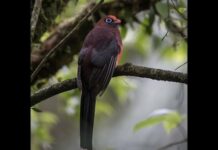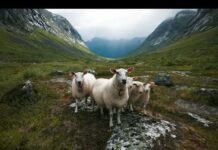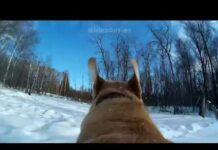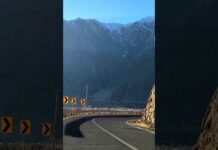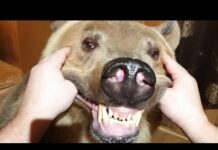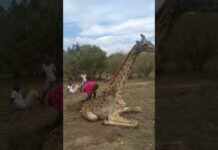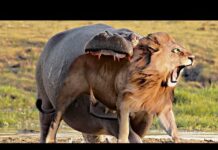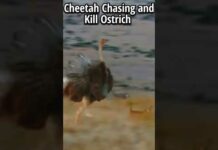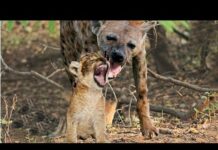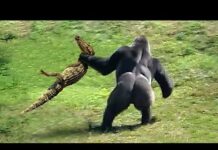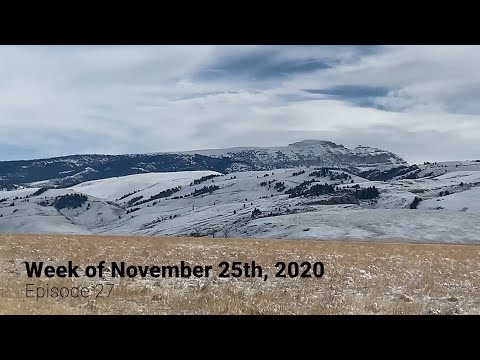Join us on Facebook live every Wednesday 5:30MT for a couch vacation! With a rebroadcast on IGTV and YouTube. This week we have updates on Grizzly 399 and Grizzly 610 as well as migrating moose, great gray owls, wolves in Yellowstone and more along with our trivia question of the week and ask a biologist segment! We hope you will join us!
hi everyone and welcome to this week's wildlife wednesday weekly roundup i'm your host tim lee thompson and we've got some fantastic videos to show you from all over the greater yellowstone ecosystem what we'll do today is we'll.
Show you the latest and greatest that our guides have been seeing out in the field in grand teton national park in the national oak refuge as well as yellowstone national park then you'll have a chance to win our trivia question of the week lastly i will be going ahead and answering your questions here live.
So if you've got a question that's wildlife biology or national park or grand teton yellowstone the like related go ahead and ask me in the comments section and i'll see if i can't get you all some answers joining us in the comments this week is our eco tours naturalist maddie so definitely.
Say hi to maddie everybody and let us know where you're watching from to start from to start with this week let's talk about moose and their winter habits as we start to see snow in cooler temperatures in the valley moose are moving from river.
Bottoms and lakeside stream side habitat sometimes called riparian habitat up into the sagebrush flats of jackson hole in grand teton national park bull moose which typically in the summer would be solitary animals will often times kind of pair up into bachelor groups during the winter.
These bachelor groups are not truly herds as the animals are still a solitary species but they are using each other for companionship and utilizing uh the same food resource which is antelope bitter brush it grows in and amongst the sagebrush you can see the moose here eating some of that.
These males will form great bonds with each other and some will actually end up hanging out with the same males year after year winter after winter and others will form new bonds every year some of these bachelor groups actually end up getting to be pretty large in size.
When i was out last evening with guests i actually ran into a group of five bulls hanging out together on the sage flats that's relatively unusual most of the groups are going to number more in the two or three but because of these groupings it's not uncommon for us to be able to.
Have an opportunity to see quite a few moose in a relatively short period of time in the winter months in jackson hole these two bowls have been hanging out quite a lot together this winter and one of my favorite things about this footage taken by naturalist maddie.
Is that you can actually see the frost forming on their backs moose are so well insulated for winter that very little heat actually escapes their body and because that's the case when it snows it oftentimes will just pile up on their backs because the the body heat from.
Us if you put your arm out in the snow the snow would instantly melt on your arm but for a moose they actually have so little heat coming out that the snow can just build up tyler has been spending time with another bachelor group most of the bulls in this group have.
Slightly smaller antler sizes but there's actually more of them paling together up in the sagebrush flats this particular group has been kind of fun to watch because they're pretty young and rowdy older moose with nothing to prove in life often times can be pretty slow and.
Sedate it's the younger bulls that sometimes show the exciting action chases and play fights and this group did not disappoint tyler and his guests have had quite a few opportunities to watch them doing their little mock battles over the last couple weeks.
I'll let tyler put it best in this great view he and his guest had oh oh what's going on so this is a little bit of a dominance display here wow yeah so male ungulates will do that to each other and two females uh to display dominance kind of like dogs yeah so if you get a chance to get out to.
Jackson hole this winter or in the coming winters we hope you will get up out on the sagebrush flats and get a chance to see some of these moose for yourself it's a pretty once in a lifetime opportunity and something we have the joy to be able to see every day out here as jackson hole is.
One of the best moose watching locations in the world so a big thanks to maddie and tyler for that great footage of moose from this week next i thought it'd be good to give you an update on grizzly bear 399 and grizzly bear 610. let's check in i thought i'd give you.
All an update on our local grizzly bear population most of our grizzlies have gone into hibernation for the winter but grizzly bear 610 and her two cubs were spotted by elise this week still out and about foraging for food.
Resources and then i went out uh the next day and actually saw their tracks littering across the snow for those of you wondering about grizzly bear 399 and her quadruplets they are slowly making their way back towards grand teton national park and all four cubs are doing really well.
Now of course this footage was taken from inside a house from a cell phone you always want to make sure you're keeping your distance from any grizzly bear maddie got this great footage of the family all together kind of slowly making their way northward.
So a good update from some of our favorite bears in the granola stone ecosystem grizzly bear 399 is finally headed north hopefully she'll be headed up to her hibernatory den although she could stay out for a little bit longer and her daughter grizzly bear 610.
Doing just fine with those two cubs of her own alright so next up we've got a really big treat for you guys our eco tours naturalist josh was up in yellowstone and got some great up close and personal encounters with wolves which is a very rare event hello this is.
Josh met with jacksonville eco tour adventures i've got an exciting wolf update for you from the northern range of yellowstone national park last week the wapiti lake wolf pack took a trip out of their territory in yellowstone's interior ending up near tower junction in yellowstone's northern range.
The wapiti soon found themselves hauling with 35-member strong junction butte pack whose territory they were intruding upon species wolf on wolf conflict is the leading cause of death of wolves in yellowstone and the smaller wapiti pack wisely decided to retreat crossing the road right in front of us as they headed.
South close-up sightings like these ones are uncommon but do happen if you're in the right place at the right time however since successful reintroduction over 25 years ago wolves have been widely visible from afar.
Which is why we use maven binoculars and spotting scopes on all of our tours of grand teton and yellowstone national parks late fall and winter are among the best times of year to view wolves in the greater yellowstone ecosystem for several reasons first by late fall pups are old enough.
To rejoin and hunt with their packs meaning there's more wolves moving across the landscape second as snow piles up in the high country prey species including elk bison deer concentrate in the valley where they and wolves as a result are more visible.
Poor forage conditions and winter weather weaken these prey species making them more susceptible to hunting by wolves winter is the time of year to be a wolf while summer is the time of year to be an elk third in mid-winter around late january and february.
The wolf mating season begins howling and interactions between packs increase as wolves coming of age make exploratory forays in search of mates the opportunity to see wild wolves again in yellowstone and grand teton and all across the greater yellowstone ecosystem is a conservation success story that's been over 70 years.
In the making in 1944 ecologist arrow leopold was among the first to argue in favor of wolves stating probably every reasonable ecologist will agree that some of them should lie in the larger national parks and wilderness areas for instance.
The yellowstone and the adjacent national forests it's amazing to think that as 2020 comes to an end we have now witnessed over a quarter century of wolves returned to the greater yellowstone ecosystem a truly wild landscape right here in the lower 48 states.
Thanks for watching this is josh with you go ego tour adventures and we hope to see you in grand teton yellowstone national park soon thanks josh really really fun stuff going up in yellowstone national park so although the park is.
Closed to vehicle entry over snow travel starts to open pretty darn soon and we certainly look forward to that part of the annual winter season here in jackson hole now we haven't heard from sarah ernst in a while and she's got a great update on great grey owls so let's check in with her hello this is.
Sarah with ecotour adventures and i'm standing in some very good great grey owl habitat here they really like these nice open forests the mixture of trees and grasses we have been seeing a lot of great grey owls recently this fall as the young owls have left their nest and the parents have.
Left them to fend for themselves the great grey owls we've been seeing are often juveniles i want to talk a little bit about what the first few months of this owl's life was like like many owls great greys can't build their own nests they may use a raven or a hawks nest.
Or kind of find a little nook at the top of a broken down tree we are often asked why yellowstone and grand teton don't remove the unslightly dead trees in the parks and one of the many answers to this question is to provide wildlife habitats such as great grey l nest sites it was completely up to mom who's larger.
Than the male to incubate the eggs in early spring while dad provides her food while as many as five eggs might be laid typically in this ecosystem we see two or three babies in the nest the eggs that hatch first have a few days head start on their younger siblings and are usually fed first.
Which means the smaller younger one will only survive if there is abundant food after the young owls fledge in the summer the male and sometimes the female will continue to feed them for several weeks to months while building their flying strength and learning how to hunt by autumn though the parent birds have gone their own separate ways for the.
Rest of the year and the young birds are on their own they're already full grown at least in their body but not always their brain they've got some learning to do our yellowstone and grand teton owls will will remain here to hunt as long as the snow levels are low.
But they will typically migrate to areas with less snow as our long snowy winter continues great grays are more likely to hunt during daylight hours they are elusive and charismatic birds they use both their sense of hearing and sight to find their prey so it's pretty important to stay quiet.
And still if you are lucky enough to encounter this grey ghost of the woods it can be a once in a lifetime opportunity to spend time with this awesome bird and we encourage people to enjoy them at the experience but noises and movements of people can.
Stress and distract the bird at ecotours we always try to set a good example for the other wildlife viewers by remaining a respectful distance and staying quiet amongst these kings and queens of our northern forests so a big thanks as ever from our naturalist sarah ernst so i've got a real treat in favor and.
Story for you guys this week we kind of were thinking everyone's all cooped up particularly in areas where the covet outbreak has become pretty darn severe in the last couple weeks so we asked tyler to take us on a virtual hike in grand teton national park let's check it out.
Hello everyone happy wildlife wednesday my name is tyler greenlee and i'm going to take you on a virtual hike today we're out here at blacktail ponds and grand teton national park i got my camera my bear spray and we're gonna walk down the trail and see what animals and plants and other.
Cool sightings we can find awesome let's head out all right guys we're out here at blacktail ponds here's kind of a landscape shot of where we're at today there's the tetons in the background covered in snow and glaciers we have a really.
Unique habitat in front of us with willows tall trees and beaver ponds this is a riparian zone there's some mallards down there and i'm sure some other smaller ripe herring critters like beavers and raccoons there's my camera right there if we look behind us you can see it's dry sagebrush grassland.
This forest only exists because of the snake river down there and then here's the muddy snowy trail we're walking down today i wore my tennis shoes which might not have been the best plan it's a little muddy out today i'm gonna have to bring my heavier heavy heavy-duty boots next time.
And we just came across our first animal sign let's check it out all right guys here's that track it's an older moose track there's a little bit of some dry plants in front of it you can see it's a little bit of an older track it's sunken in the edges are melting away i would say.
This track is at least two days old it's kind of hard to tell because the snow has been melting pretty quick quickly recently we've been having 60 degree weather and so the tracks they don't last as long in the snow as if it had if as if it.
Were if as if it were colder uh when it is colder the frost and uh and just the colder temperatures do preserve the tracks longer of course if we do come across something that's super fresh it'll be super crisp in the snow almost like if i put my fingers in the snow see how sharp.
That is that's how sharp and a fresh track we're kind of coming down this steep hill into these cotton woods i'm going to switch the camera over to show you kind of the trail it's getting a little steep so we'll have to see how this descent goes here's the area we're descending.
Down into the trail is right there you can see we're entering an area with a lot of cottonwoods and the reason these cottonwoods are growing here is because of the stream that flows through this area it's currently dry but in the spring when all the snow melts it will it will come out of the hills all this.
Water will come out of the hills over there that's black tail butte and that's where we get a lot of water runoff so we've talked a lot about this being moose habitat and we do have some more moose sign here let's check it out guys we are down here in kind of this.
Thick vegetation you can see you can't you can't really see very far in it and we're moving through here very slowly and carefully i'm actually glad to be talking loud because you never know when there's going to be a large herbivore or even a bear down in this thick vegetation.
But the reason we stopped here is because we do have more animal sign we have more moose tracks and about a hundred meters behind us there's some deer tracks and then we also have muscat so these are moose pellets and we don't have to be grossed out by the scat because it's basically.
Just digested vegetation if it was carnivore scat it's something we definitely wouldn't want to get close to but herbivore scat is very clean and i can tell this is moose scat because it's almost like it has a wood chip consistency within the actual scat and.
Then and then at the tips of the scalp there's a little point which is very typical of moose and here is what the moose are eating these are willow bushes kind of these these uh branches here this is actually looks to be.
Choke cherry which the moose would eat but they're mainly after the willows and so i can tell this is chokecherry because of the spines that are on it wow over here we have willow genus name is salex it has this uh yellowish uh branch to it sometimes they appear red or even.
Purple from a distance and this is the primary diet of moose uh during the winter and during this and a big part of their diet during the summer as well guys we are down in this river bottom and we have our first bear sign down here so i'm going to flip.
The camera around and i'll show you this bear and i can tell it's bare because it's full of seeds this is probably from them feeding largely on berries at this time of year and i'm guessing this is black bear scat and that's just based off of the size and the fact that it has so much berry seeds.
Within it now the black bears at this time of year are probably already hibernating and so the scat does look to be pretty old probably at least two weeks old now what's really cool is that these seeds in the berry scat could actually turn into bushes and so it's likely these are chokecherry or.
Hawthorne berries and hawthorne berries when they're deposited like this the scat will act as a nice fertilizer package for when these seeds germinate here's some more animal sign guys this is a pocket gopher burrow and so this is where the pocket gophers which is a.
Small fussorial rodent fossorial meaning it lives underground almost its entire life this is where that rodent pushes up all the dirt from its underground diggings these rodents burrow like a mole their entire life and they feed on the roots of grass and tubers.
Underground and the only time they come to the surface is to push up this dirt when they do come to the surface that's when they're most vulnerable to hawks owls coyotes and their other various predators there is one animal that can actually dig out a.
Pocket gopher and that is the american badger the badger is actually fast enough to dig up pocket gophers while they're underground hey guys just saw two more piles of bear scat about 20 meters behind us but i just want to reiterate that.
Whenever you're in the forest especially in wyoming it's so important to actually carry bear spray all right guys i'm going to head through these kind of thick bushes through here and i'll catch up with you in a sec all right guys here's a progress update on our hike we've gotten closer.
To the tetons and we are now in the river valley woohoo and i can actually hear the snake river up ahead guys we just arrived at the tr at this tributary to the snake river really beautiful scenery here and i have some more animal sign for you guys and so if we look at the edge.
Of the stream here there's actually kind of a tunnel dug and if we look back on the actual trail it's caved in right at this point and what this is is this is a muskrat burrow now muskrat burrows are used by many different animals they're used by beavers they can be used by.
Mink which is a type of weasel and they can be used by river otters all as deading sites and so muskrats are really important along these areas and here we have kind of a historic stream bed which is known as an oxbow and so this is probably where this tributary.
Historically flowed into the snake river and these oxbows are really important habitat you can often find lots of ducks in fact there's some ducks that just swam out they're right over there kind of middle of the stream oh they're taking off flying towards us they're gonna come up above the trees.
There they go and so these oxbows are great habitat for ducks uh muskrats mink beavers they hold a lot more vegetation in life fish like to be back in there and so preserving these alluvial oxbows is really important for the ecology of these riparian areas awesome guys we've arrived at the snake.
River behind me is that tributary that we've been following and this is where it meets with the main channel of the river now these rivers are carrying large amounts of sediment and if we look behind me you can see that settlement.
Building up on the shore of the river that sediment is really important that's what all the willows tall grass all these big trees over here you can kind of see in the camera now are actually growing out of the soil is much more rich in nutrients than the dry upland soil where we find the sagebrush.
And that dry native and sometimes invasive grass species um and that's where we find obviously the pronghorn and the bison down in these habitats we do have black bear moose tons of deer i've been seeing tons of deer tracks down in here which is pretty awesome.
And unfortunately i can't really tell if they're mule deer or whitetail deer we can only speculate because this is a riparian zone i want to say there's a high chance it's white-tailed deer just because they do prefer this lowland habitat with the river the tall trees and the alluvial soils now i'm gonna try and pan we have some.
Cabins behind us and then obviously the tetons so hey guys so we stopped here along the trail because i found some really cool plant species uh which i'm going to show you now so i'm going to flip the camera around and show you some berries and then some really interesting plants.
That live down along the rivers in grand teton national park so so here we have some rose hips guys and so this is actually wild rose and uh this is one of the edible plants that you can actually consume out here and something that the settlers used to eat.
When they were in this area it's super high in vitamin c and so if you're out here in the winter and you're starving to death and you don't want to get scurvy this is a very reliable source of vitamin c scurvy of course is the disease you get from vitamin c.
Deficiency you can eat these raw uh they they don't taste horrible they don't really taste like anything the only downside is that they have a bunch of seeds inside of them and so it's really better to kind of eat the fleshy part around those seeds you can also turn these rose hips into tea.
Which is a cut in my opinion is a better way to actually consume these berries these wild fruits that way you're not obviously eating those kind of waxy seeds so rose hips are known as angiosperms which is the group of plants that makes.
The majority of the vegetation out here that includes the cottonwood trees the willows the grasses but here we have a much more ancestral species of plant it's called horsetail and i'm not gonna pluck it since we're in a national park but i am going to show you it so here is a horsetail and uh its scientific name.
Is equisetum and horsetail in this area comes in a bunch of varieties this is the single stock variety it also comes in a in a branching variety which is fun to play with when i was a kid i used to actually play with these plants like lincoln logs each one of these segments you can.
Actually pull apart and uh then you can stack them together uh like lincoln logs but this is an ancient plant that has existed on earth for about 300 million years i believe so it's one of the oldest forms of life out here and as a plant that was around.
During the dinosaur age a lot of dinosaurs did eat this plant and and so what we're looking at right now is um a living fossil hey guys we're about halfway through our hike and i just wanted to give a quick shout out to anyone else who has joined us.
Halfway through this hike that's totally fine um i just wanted to give myself another introduction my name is tyler greenlee and welcome to wildlife wednesdays we have a really beautiful view and of my camera which i'll move out of the way real quick of the of the tetons and this beautiful.
Snake river riparian zone behind us we've stopped here along this tributary to show you something really special this is behind me a big beaver dam you can see how the beavers have used logs and sticks and large amounts of sediment to hold back this water now this is going to really.
Help in the spring when we do have that spring flooding all that water is going to be held back in these natural reservoirs that the beavers have built and the flooding is going to be less severe downstream now these dams serve another purpose they also.
Hold back tons of water during the driest times of the year so that which is uh going to be great for the animals it's great for people because we have this kind of natural water source that is stored behind us the snake river is the main water source for the town of jackson and so.
This water is going to naturally leave this dam over time and we have a lot of water stored back in there so beavers are really great for water preservation on the landscape you actually have the beaver lodge right there kind of behind me um it's a big mound of logs and the beaver lodges are so strong not even.
A black bear can break into them and the beavers right now are likely in there beavers are highly nocturnal i tell guests on tour that they are basically walking hamburgers when outside of water and so these beavers are oftentimes nocturnal just so that they can use.
The cover of darkness to stay safe beavers are they're stimulated to build dams by the sound of rushing water and so i do see one little spot right here where the water is actually pouring over the edge of the dam and so likely what will happen is the beavers will come in and.
Patch that section when they hear that flowing water i have another track here this is a really good moose track and if i kind of scan you can see there's a couple moose tracks around here and uh here you can really see the anatomy of a.
Moose track you can see they have the cloven hooves right here which are the main two toes on a moose foot however moose have four toes actually on their on their legs and so these are the main two toes and then back here you can see kind of a little dot right here and so.
That's a that's the mark of a dew claw and so moose do have two dew claws if you think of like your pet dog dogs if they're not uh d-clawed uh but if your dog does have a dewclaw that's the same thing similar to a moose except moose have two.
Of them and so surprisingly moose deer elk they all have four toes and in fact most even toad ungulates which are all the ungulates within grand teton national park actually have four toes versus horses which are odd towed ungulates.
They only have one toe and one hook as we are getting close to the end of our hike we're about to pop up on the snake river and uh i just wanted to uh kind of give you guys a species list of all the things we saw on this hike and so i won't do the plants.
That's way too tedious but i will name the animals and the animal sign that we saw on our hike so we saw uh beaver dam so beavers live here we have muskrats northern pocket gophers i'm pretty sure they're northern pocket governors is the species that lives down here um.
We also have uh either uh whitetail or mule de or even potentially both down here we saw their tracks we also got black bear sign and moose sign as well as around 10 different species of bird including ravens passerins.
And a bunch of waterfowl and so these riparian areas with these rivers this thick vegetation are super important as far as uh preserving and conserving biodiversity and life on these landscapes i just had two oh there they go kind of off near.
The backs of the trees you can see their white tails waving i have two white-tailed deer running off into the trees and so i'm guessing the tracks of the deer we saw earlier were actually white-tailed deer and now i'm just gonna scan over to the right a little bit because there's also a moose right here and so here's a.
Mousse and those white tail are kind of looking back at that moose they're a little nervous and so here we have the two ungulates that we were tracking today on our hike i hope you guys have a wonderful wednesday and once again thank you so much for tuning in my name.
Is tyler greenlee and have a wonderful wednesday so hopefully everybody enjoyed that a little bit of a longer segment so let me know in the comment section if you find these wildlife hikes fun i really enjoyed that afternoon out with tyler and guys i do a big reminder that we've.
Got this really cool thing going on this week um we're uh previewing our black friday sale early so if you'd like to go out on a tour or you want to go on your own wildlife hike with tyler um we've got this really really good deal we're offering 10 off all winter tours so from january 1st.
To march 31st and 10 off of our web store which we'll get to in just a minute you want to use this coupon code uh eta black friday 2020. if you're having a hard time remembering that eta just means ecotour adventure so eta black friday 2020 and we've had a bunch of folks taking.
Advantage of this already um orders for discounted trips have been flying in today so if you think you might be visiting jacksonville in the future or you just want something fun from our store uh definitely take advantage of that now speaking of.
That of course it is time for our trivia question of the week our featured item in the eta store because after all the winner is going to receive a 10 gift card to our store is this awesome logo steel wilcox fleece made by steel clothing company which is based here in.
Jackson hole so if you want your very own logo eta wear matti will go ahead and put a uh link up in the comment section for that all right so the way this works is we started our ecotour adventures store during the first cloven closure as a way to pay for employee health insurance.
Um we wanted to make sure everybody was covered in the middle of a pandemic and through everybody's great purchases 100 of the proceeds are going towards our health insurance so we certainly appreciate you guys taking a look see if there's any christmas presents or anything else you might like to have but.
If you want to go ahead and get ahead of the game and win this great 10 gift card all you have to do is answer our trivia question of the week correctly and then all the right answers will be put in a drawing and one name will be chosen to win that we'll go ahead and.
Contact you so let's start with last week's question and our uh quiz master elise has already awarded for this question so you can answer in the comments section if you'd like but it's not going to gift you that gift card last week's question and i used this great illustration of theodore roosevelt.
Having a thanksgiving truce from the library of commerce to illustrate it which is what animal's diet is made up primarily of elk and uh that animal is in that illustration there sitting right next to the elk side by side in their thanksgiving truce.
That of course is the gray wolf the vast majority of their diet so between 90 and 95 of their winter diet and about 85 to 90 of their summer diet is composed of elk a lot of misunderstandings about wolves lots of incorrect folklore that goes back to the middle ages werewolves anyone uh but one of the.
Misconceptions is the vast majority of what they eat out there is elk so great on that one if you got that one correct good for you you definitely know your wildlife trivia let me see if i can stump you for this week so okay now this is the one you want to comment on to win your 10 gift card.
And of course the question this week is what mammal jackson whole mammal can eat sage so go ahead and answer in the comment section what jackson hall mammal is actually capable of eating sage which is our predominant major plant here in jackson hole other than of course um.
Lodgepole pine trees you know all of our valley floors are covered in sagebrush there are a few birds that can eat sagebrush i'm not asking about that i'm asking what mammal there's only one mammal that can actually get nutritional value out of stage so go ahead let me know in the comments section.
I was curious as i was working on this today because this question does come to us from our ecotours naturalist seth who would have asked this which is do turkeys eat sage because sage grouse eats sage and ruffed grass eats sage and they're both foul like birds we don't have turkey here.
There are turkeys in other areas of the west where sage is though so i went ahead and i went on a search to look for it because it's thanksgiving and basically long story short nobody's quite sure so maybe turkeys can eat sage but the question is what mammal eats sage so if you know the answer we'll go.
Ahead and we'll talk about that next week for sure uh but in the meantime see if you can't win our trivia question in the meantime i am here uh to answer your questions live so if you've got a question for me uh go ahead and write it in the comments section.
I've got my ipad here um so if you see me looking down that's that's what i'm doing i'm uh looking at your questions oh man people are already oh there's some correct answers on the trivia question everybody so let me go back to sort of the beginning here because there were some questions.
First and foremost i asked everybody was joining us from i think the furthest away was pierre pierre's joining us from alsace in france oh my gosh that's so cool uh or else i think it's all suns is that how i say it not sure pierre you can correct my.
Terrible terrible pronunciation but thank you so much i think you are the furthest away today uh i'm so excited that we have a frenchman what time is it there in france that you're watching us live that's so cool thank you for joining us and then erin wanted to tell us that she's from denver.
But she's watching from jackson hole because she's going on a tour tomorrow erin that's so cool i'm so excited you're headed out really fun day to do it on thanksgiving i hope you have a great great day we've had such a good series of tours the last couple days so much stuff going on out there so have a blast we're so excited.
Karen asks do 399 and 610 den near each other they do den near each other but like not super near each other which is to say i think 610 mimics where her mom ends because that's where when she was a cub she dead with her mother so she kind of dens nearby but it can vary from year to year um.
There were there was a little period of time there uh where we didn't know where 610 was for about two years and she certainly wasn't denny in that location but she seems to be denning sort of vaguely near her mother lately hopefully that answers that question let's see here carrie asks.
Just curious what the purpose of a dew claw is carrie that's a really really good question so tyler was talking a little bit about those vestigial hooves that you might see on ungulates like moose um and he was comparing him a little bit to a dew claw that you might see.
On a canine or a feline like a dog for instance may have a dewclaw historically it was thought that those were vestigial so vestigial is just a scientific term that means something that was evolutionarily necessary in the past but now is not evolutionarily necessary so a really good example of something.
That um could be vestigial would be um the appendix in humans although we're finding there might be some things appendixes do but you could certainly live without one um or some other things that we have uh segmented muscles in our abdomen those six packs like brad pitt has.
Those are actually an evolutionary adaptation uh made in mammals when they were still uh bound to the oceans the ancient seas that goes back to when uh we were fish like life forms we don't need segmented mussels and in fact that's not very beneficial for us because it can cause things like hernias.
But all mammals today still have segmented muscles in their chest so a dew claw could be this digital but there's some evidence that seems to suggest at least in wolves and some dogs that they actually do use it to grip things like bones um or other things that they need to get a.
Good grip on if you've got a dog who's got a dewclaw that is not sort of flappy and has no muscle connective tissue you might witness your dog doing something along those lines so there might actually be a purpose of that in the case of moose why.
Those two additional hooves are there somewhat questionable we don't really know but once again there's a suspicion of a vestigial origin the other reason perhaps is that in um a more ancient time there was a smaller set there that was allowing them to balance when they were running.
And of course moose don't necessarily uh need to run at exceptionally high speeds anymore because rather than fleeing from predators they fight predators uh and so they've receded upwards where they're going to be out of the way so hopefully that answers your question let's see what else we've got here.
Let's see here looks like people are liking the wildlife hike so we'll try and do more of those for sure they're super fun out there looking for track and sign one of my favorite things to do with guests so we might as well do it virtually right let's see here.
Karen says i need the white and purple knitted hat with the bear karen we'll ask if elise can get some of those up for sure but if you want a great way to do it is you can go ahead and get one of those hats on our store we have these really awesome knitted hats that i was talking about last week and just dictate that you're looking for.
White and purple as a color and i'm sure elise will whip you right up because i didn't realize that my white and purple one wasn't one of the ones on offer i think she just asked me what my two favorite colors were and then made them but um yeah if you haven't checked out elise's uh.
Awesome awesome knitted hats elise was the one who had the the images of 610 this week let me know let's see here robert says okay what mammal eats sage you tell me that's the question go ahead and take a guess right what's wrong with the guess worst case scenario you're wrong you.
Don't get a 10 gift card i'm trying to be a little harder guys hopefully this was a slightly harder question for you feel free to weigh in to see if i did good or you want me to go back to something a little bit easier but i think this is a good one good on seth for coming up with that.
Question this week don you've asked me a really interesting one don asks why were bullfrogs eradicated from the kelly area a year or two ago what problem did they pose done that's really really complicated uh and the answer is we're not exactly sure so for those of you guys not.
Familiar with the local wildlife politics of jackson hole don's referring to a situation um there's a warm spring in grand teton national park that was formed as part of the seismic activity that occurred in the grovant range um that in part caused the grove on slide.
In the teton i'm sorry in the grovant range uh throughout the 1920s and 30s we had sort of increased seismic activity um there was a hot spring that was formed as part of that that maintains a temperature of 83 degrees year round and over the years several invasive species animals that don't belong to the area have gone in.
There starting in the 1980s people dumped some goldfish and african cichlid fish probably from aquariums and fish tanks my suspicion the only reason i can think of that you would do that is you were moving and you couldn't take your fish with you so you thought maybe that was a good.
Place for them to live i would have guessed with how severe our climate is here that tropical fish would not have done well uh but in fact they are alive and thriving in kelly warm springs which is a concern to the park service they don't want those fish to make it.
All the way to the snake river and of course the outflow of kelly warm springs flows to the grove on which then does flow to the snake then one invasive goldfish and the snake i can understand that bull frogs we don't know exactly how they got there certainly not native maybe released pets same.
Situation somebody let their pet go there they thought maybe that was a good place for them to survive bulldogs certainly can out compete other amphibians and they can transmit disease to other amphibians as well quite a few of our reptiles and amphibians are in.
Perilous perilous shape in grand teton and yellowstone national park a really good example of this would be the northern spotted leopard frog nobody's actually seen one in the western rocky mountain states uh for let's see a child handed one to a park ranger at the base of jackson lake dam in 2001.
And that's the last one that's been seen so presumed extinct but if they were anywhere left on the planet they would be in grand teton national park and so obviously we want to do everything we can to try to preserve them um if there are northern leopard spot spotted frogs left.
Obviously things like sagebrush lizards and other animals like that that are really really rare animals they can certainly get diseases from invasive species like bullfrogs so the the reasoning that was given which is a valid good reasoning i'm not here to inflict my opinion on you but it is was that the concern.
Was that they could be vectors for disease and that if they continued to populate good habitat that all of these reptiles and amphibians that were struggling in grand teton national park were just going to be in worse condition because they were isolated in kelly worm springs the park service sort of saw it.
As a way to nip it in the bud before they started to spread out my problem with that was that the bullfrogs had been there a long time i remember bullfrogs being there when i was a little girl um and i was born in 1982 so they haven't exactly.
Been spreading rapidly uh nor have the goldfish uh nor have the african cichlids and the simple reason for that is as soon as the water becomes cool and ice is over in the winter an african cichlid is certainly not going to be able to travel in water above about 69 degrees fahrenheit.
Bull frogs obviously are going to struggle once they get out of those warm conditions too so it was a little bit of an island of invasive species it's actually very funny if you go to the grand teton national park website and you just go to like a species listing when you get down to fish there are about seven species of native.
Fish in grand teton national park and then there's a listing of 29 fish underneath that with an asterisk and it just says only president kelly worm springs because those are all those weird goldfish and african cichlids that they found so the park went ahead last year and they applied.
A piscocide which is just a um a killer of fish and oftentimes usually amphibians to the water in kelly warm springs the idea being it wouldn't kill plants or kill other things would just kill the fish that were present um i have no idea whether that was successful in the past.
Piscocides have had mixed results on things like bullfrogs so we'll see in the next couple years whether any of those bullfrogs made it but that certainly was the reasoning we certainly don't need a spread of invasive species in grand teton national park and i think grand teton national park.
Realized that these animals weren't providing any particular benefit and they posed a risk so it might as well be safe rather than sorry hopefully that answers that question for you let's see what we got here oh toya that's a great question outside of grand teton and yellowstone national.
Park are there other places or national parks that inspire your art for those of you guys who don't know when i am not being a wildlife biologist i'm actually an artist as well here in town most primarily in the medium of ceramics i'm a professional potter as well.
I am greatly inspired by wildlife in the national parks gee i wonder why because i'm a giant animal nerd right but i do love landscapes all over the world i've illustrated everything from deserts and cities on my ceramics to the grand canyon.
Zion i have a lot of great loves but when i often times can when there's not covid going on i love to escape to the desert and i find desert landscapes particularly intriguing in ceramics so 99.9 of what i make is uh definitely grand teton yellowstone.
Wildlife oriented lots of moose but uh i do enjoy illustrating desert landscapes as well so that's pretty cool toya thanks for that one let's see here linda says will you continue these presentations for the rest of the winter we plan to unless um you know there's some reason that we wouldn't.
Some of the things of course that are on our end it's not exactly zero dollars to produce and make these they do cost money um obviously we're a small business and so we've got to make sure that it certainly makes sense to do it which is why we ask you guys to like and share these when you can.
Uh but yeah we're enjoying it i'm enjoying it we hope to certainly continue them in the future toy asks do the harlequin ducks stay in yellowstone year round no they don't they migrate to the pacific coast generally oregon coast although they can go to washington and they're only there in uh the spring.
Summer fall so they've already left for the season we'll miss them but it's always fun to see them come back kevin asks what would a bear den look like is it a cave or something else bears can den in caves that's certainly something they could use most bear dens when it comes to grizzlies and black bears.
Because other bear types might be are different are gonna be on preferably steep northern facing slopes the idea being they can dig a relatively small hole which will then fill with snow but if the slope is steep enough it won't fill completely which will cause.
This nice insulative layer but leave a little breathing hole uh so that they can continue to maintain hibernation without having high carbon dioxide levels in the den uh and it'll be just a tiny bit bigger than the bear itself uh i think i've said before uh in these question answer sessions.
I've gone and i've looked at a couple different dens and crawled inside them over the years always always when it's a the dead of summer and i know the bear's not around and b when i'm pretty sure that the bear den or wolf den or whatever it is i'm crawling in.
Has not been used for several seasons i don't want it to smell like people right if they want to reuse it i don't want to keep them from doing it so when i'm really really sure it's no longer being used anymore i've investigated a couple of them i am not a small person but i'm definitely smaller than a grizzly bear and i can.
Barely fit in these bare tents so how they're able to squeeze in is beyond me and some folks have been asking about 399 in those quadruplets how they're all going to fit well they're going to have to dig a bigger den for sure so great question i just said brad pitt six pack is unhealthy it is.
There you have it guys and gals can aim for perfection but it's still vestigial heard from a biologist hopefully i made some of you laugh on that one let's see here all right i think i got everybody's question if i missed your question just let me know in the comments section.
I'll see if i can't get you an answer i did want to wish everybody a very happy thanksgiving from your friends at jacksonville ecotour adventures we are so appreciative that you spend your time on wednesdays with us we hope that you guys all have a great day tomorrow a great week a wild week.
You stay safe out there stay healthy and we'll see you next week so long
We are excited to present to you the captivating video titled “Wildlife Wednesday Weekly Roundup- Week of November 25th, 2020”. Get ready to embark on a journey of enjoyment, smiles, and laughter as you watch this delightful creation. “Wildlife Wednesday Weekly Roundup- Week of November 25th, 2020” is a perfect blend of entertainment and amusement, carefully crafted to bring joy to your day. From the moment you press play, you’ll be greeted with a cascade of lighthearted moments, heartwarming scenes, and perhaps even a few surprises that will tickle your funny bone.
Whether you’re in need of a quick pick-me-up or simply looking for some light-hearted entertainment, “Wildlife Wednesday Weekly Roundup- Week of November 25th, 2020” has you covered. The video promises to deliver a collection of moments that are bound to leave you grinning from ear to ear. With its engaging content and skillful presentation, “Wildlife Wednesday Weekly Roundup- Week of November 25th, 2020” is more than just a video – it’s an experience designed to brighten your mood and spread positivity.
The creators of “Wildlife Wednesday Weekly Roundup- Week of November 25th, 2020” have poured their creativity and dedication into crafting a visual treat that resonates with audiences of all ages. Through expert storytelling, impeccable timing, and an array of engaging content, “Wildlife Wednesday Weekly Roundup- Week of November 25th, 2020” promises to be an unforgettable journey that lingers in your memory long after the video concludes.
So sit back, relax, and prepare to be entertained as you dive into the world of “Wildlife Wednesday Weekly Roundup- Week of November 25th, 2020”. It’s a delightful video that aims to bring a dose of happiness to your day, leaving you with a lasting smile and a heart full of laughter.
This video was uploaded in youtube and has recieved 213 views so far. This is a great achievement and laso it has received 7 likes and .
Data bout the video:
Rating: ,
Video dimensions: 2d,
Video definition: sd,
Video duration: 00:51:49,
Video favourite count: 0
Video comment count: 1


